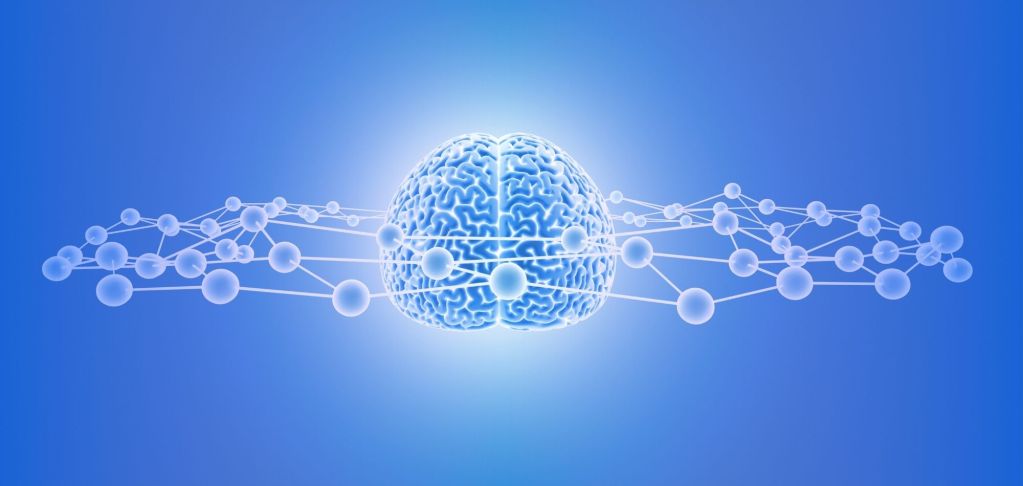Advancements in Duchenne Research: Breakthroughs and Promising Therapies
Duchenne muscular dystrophy (DMD) is a severe X-linked disorder caused by a lack of the protein, dystrophin, in muscle cells, resulting in the progressive muscle weakness and the gradual loss of muscle tissue over time. Classified simultaneously as a rare genetic disorder and a neuromuscular central nervous system (CNS) condition, DMD most commonly affects young male patients, and currently, there is no known cure for it. However, in recent decades, there have been significant strides made in understanding the molecular processes underlying DMD, leading to the discovery of multiple groundbreaking advancements in therapeutic approaches. From gene therapies to exon skipping treatments, the landscape of DMD/neurology research today has seen a rapid expansion, offering hope to patients and families affected by this debilitating disease.
With World Duchenne Awareness Day approaching on September 7, 2024, TFS HealthScience, a global rare disease and neuroscience CRO (contract research organization) leader in DMD clinical trials, is spotlighting the latest exciting developments being made in Duchenne research. Keep on reading to discover the key breakthroughs and the promising therapies that are shaping the future of treating rare CNS and genetic disorders like DMD.
Duchenne Muscular Dystrophy (DMD): Disease Overview
Disease Background
Duchenne Muscular Dystrophy (DMD) is a severe genetic and CNS disorder that affects approximately 1 in 3,500 male births worldwide. This condition is caused by mutations in the DMD gene on the X chromosome (i.e., X-linked), which encodes the protein dystrophin. Dystrophin functions primarily to maintain the structural integrity of muscle cells; therefore, in DMD, the lack of this protein results in a gradual worsening of muscle damage, inflammation, and eventual replacement of muscle tissue with fat and fibrotic tissue. These processes ultimately lead to progressive degeneration of muscle tissue and overall muscle weakness.
Disease Progression of Duchenne Muscular Dystrophy (DMD)
Early symptoms of DMD include experiencing difficulty with physical movement (e.g., walking, running, climbing), exhibiting a waddling gait, as well as having frequent falls. These symptoms typically appear between the ages of 2 and 5, but as the disease progresses into the school age years, the arms, legs, and trunk become affected by worsening muscle weakness]. By age 12, most children with DMD are unable to walk without a wheelchair, with comorbid complications (e.g., scoliosis, cardiomyopathy, and respiratory issues) finally developing during adolescence and adulthood. At this point, these secondary complications significantly shorten the lifespan of patients with DMD, most commonly due to heart muscle or breathing difficulties.
Diagnosis of Duchenne Muscular Dystrophy (DMD)
The diagnosis of DMD involves several steps:
- Genetic Testing: Identifies mutations in the dystrophin gene.
- Muscle Biopsy: Examines muscle tissue for specific abnormalities such as variation in muscle fiber size, muscle fiber necrosis, scar tissue formation, and inflammation.
- Blood Tests: Measure elevated levels of creatine kinase, an enzyme that leaks out of damaged muscle.
Existing Treatment for Duchenne Muscular Dystrophy (DMD)
Currently, because there is no cure for DMD, standard treatments primarily aim to manage symptoms and improve the quality of life:
- Corticosteroids: These are the only treatments unequivocally shown to slow disease progression. However, their long-term use is associated with adverse effects.
- Physical Therapy: Helps maintain muscle function and delay the progression of muscle weakness.
- Respiratory Support: Assists with breathing as respiratory muscles weaken.
- Cardiac Care: Monitors and treats heart-related complications.
Besides these general disease management approaches, there are several promising breakthroughs and targeted therapeutic approaches emerging in neurology and Duchenne research. Read on to discover the latest advancements that are revolutionizing the field of Duchenne muscular dystrophy (DMD)!
The Current Landscape of DMD Targeted Therapies in Duchenne Research
Over the past six years, significant advancements have been made in developing targeted therapies for DMD, highlighted by the approval of several new drugs by the U.S. Food and Drug Administration (FDA). As highlighted by this TFS article here, 2023 was a pivotal year in drug approvals across various therapeutic areas, including Duchenne research for CNS/neuromuscular conditions like DMD.
The first class of drugs approved for DMD are those based on an exon skipping approach, which leverage a technology that allows the body to produce more dystrophin by addressing specific mutations in the damaged DMD gene. These treatments require regular intravenous (IV) infusions and have shown promise in increasing dystrophin production, although they are not considered a cure.
In addition to exon-skipping therapies, newer targeted DMD agents, known as antisense oligonucleotides, are small pieces of DNA are designed to mask the exon that needs to be skipped during the production of dystrophin, allowing the rest of the gene to be correctly assembled. However, like with exon skipping therapies, these agents are not a cure and are continuing to be evaluated for long-term safety and efficacy. Overall, the therapeutic landscape of DMD include the following FDA-approved targeted drugs:
- Duvyzat (givinostat) Oral Suspension: A histone deacetylase (HDAC) enzyme inhibitor approved in March 2024.
- Elevidys (delandistrogene moxeparvovec) Injection: An AAV-based gene therapy and the first gene therapy for DMD approved in June 2023.
- Amondys 45 (casimersen) Injection: An antisense oligonucleotide approved in February 2021 that also enables skipping exon 45 in the DMD gene.
- Viltepso (viltolarsen) Injection: An antisense oligonucleotide approved in August 2020 that also enables skipping exon 53 in the DMD gene.
- Vyondys 53 (golodirsen) Injection: An antisense oligonucleotide approved in December 2019 that also enables skipping exon 53 in the DMD gene.
- Exondys 51 (eteplirsen) Injection: An antisense oligonucleotide approved in September 2016 that also enables skipping exon 51 in the DMD gene.
Recent Gene Therapy Breakthroughs for Duchenne Muscular Dystrophy (DMD): Spotlighting Duvyzat and Elevidys
ELEVIDYS
In June 2023, ELEVIDYS (delandistrogene moxeparvovec-rokl) marked a significant advancement in the treatment of DMD, as the first gene therapy approved by the US FDA. Initially, it was granted accelerated approval for ambulatory pediatric patients only aged 4 to 5 years. However, in June 2024, the FDA expanded the indication of ELEVIDYS, approving it use in both ambulatory and non-ambulatory individuals aged 4 years and older who have a confirmed mutation in the DMD gene.
DUVYZAT
Only a few months earlier, in March 2024, the FDA approved Duvyzat (givinostat), an oral HDAC inhibitor that targets inflammation and muscle loss, for the treatment of Duchenne muscular dystrophy (DMD) in patients aged six years and older. This approval marks a significant milestone as Duvyzat is the first nonsteroidal drug authorized to treat patients with all genetic variants of DMD. In a rigorous randomized, double-blind, and placebo-controlled phase 3 clinical trial, patients treated with Duvyzat showed a statistically significant smaller decline in the time required to climb four stairs compared to those who received a placebo at 18 months. The study also suggested this drug may have a broader benefit to physical function, beyond just improving muscle strength.
Novel Gene Therapy Approach Shows Promise in Mouse Models with Duchenne Muscular Dystrophy (DMD)
Most recently, in July 2024, Duchenne researchers at Indiana University School of Medicine published their novel gene therapy approach for potentially restoring the full-length dystrophin protein in Nature. The conventional gene therapy for DMD involves a shorter version of the dystrophin protein, known as micro-dystrophin (µDys). Although this approach has notably been approved by the US FDA, there is still room for improvement as it lacks the many functional domains of the full-length dystrophin protein. This deficiency means that µDys cannot fully protect the muscles, as shown by suboptimal clinical results.
In contrast, as outlined in this 2024 Nature article, Zhou and colleagues have developed a novel triple-adeno-associated virus (AAV) vector system with muscle targeting characteristics (MyoAAV4A) to deliver a complete version of the dystrophin protein into the muscles of male DMD-deficient mice. Using this method, the researchers were successfully able restore full-length dystrophin in both skeletal and cardiac muscles, improving muscle health, strength and overall function. This new step forward in Duchenne research demonstrates two key advantages with full-length dystrophin therapy:
- It does not rely on specific mutations, making it potentially applicable to a broader range of DMD patients.
- It addresses issues in heart muscle signaling, covering a crucial need in DMD treatment that µDys is unable to resolve.
Although this new gene therapy showed the potential benefits for patients with DMD, further clinical development and trials are needed to determine its safety and efficacy in humans.
Conclusion
In conclusion, the recent advancements in Duchenne muscular dystrophy (DMD) research and therapy development offer a renewed sense of hope for patients and families affected by this debilitating disease. From the approval of innovative gene therapies like Elevidys and Duvyzat to cutting-edge research into full-length dystrophin restoration, the scientific community is making significant strides toward more effective treatments in CNS/Duchenne research.
TFS’ Rare Disease and Neurology CROs: Leaders in CNS/Duchenne Research
The TFS Rare Disease and Orphan Drugs CRO leverages extensive experience with a variety of compounds, including small molecules and biologics. With clinical expertise spanning all phases of drug development and real-world evidence studies, our team anticipates and prepares for the unique challenges presented by rare diseases, as seen in Duchenne research. To mitigate risks, TFS employs several specific strategies, including country-specific regulatory approaches, recruitment tactics tailored for rare patient populations, and specialized training and communication for investigator sites. In the last 5 years, TFS has accumulated over 70 studies in rare disease experience across several indications, including Duchenne muscular dystrophy (DMD), Barrett’s esophagus, hemophilia, Huntington’s disease, and more.
Visit the Rare Disease CRO here to discover how our experts are supporting innovative developments in diseases like DMD.
The TFS Neuroscience global operations teams are well-versed in the unique challenges associated with neuroscience, psychiatry, and pain studies at all stages of development. To leverage industry expertise, TFS frequently collaborates with several neuroscience-specialized academic research organizations, patient advocacy groups, and consultancies across Europe and the US. The majority of our neurology clinical development portfolio encompasses research into multiple sclerosis (24%), epilepsy (23%), psychiatric conditions (13%; e.g., anxiety, depression, schizophrenia, etc.), and Alzheimer’s disease (10%). Neuromuscular disorders make up 2% of TFS’ CNS clinical trials, including DMD and limb girdle muscular dystrophy.
Supporting over 335 neurology trials and nearly 40,000 patients across 30 countries and 3,000 research sites, visit TFS Neuroscience to see what our team can offer for your next DMD or CNS clinical trial!
Connect with Us
Contact us today to discover how TFS can be your strategic CRO partner in clinical development.



